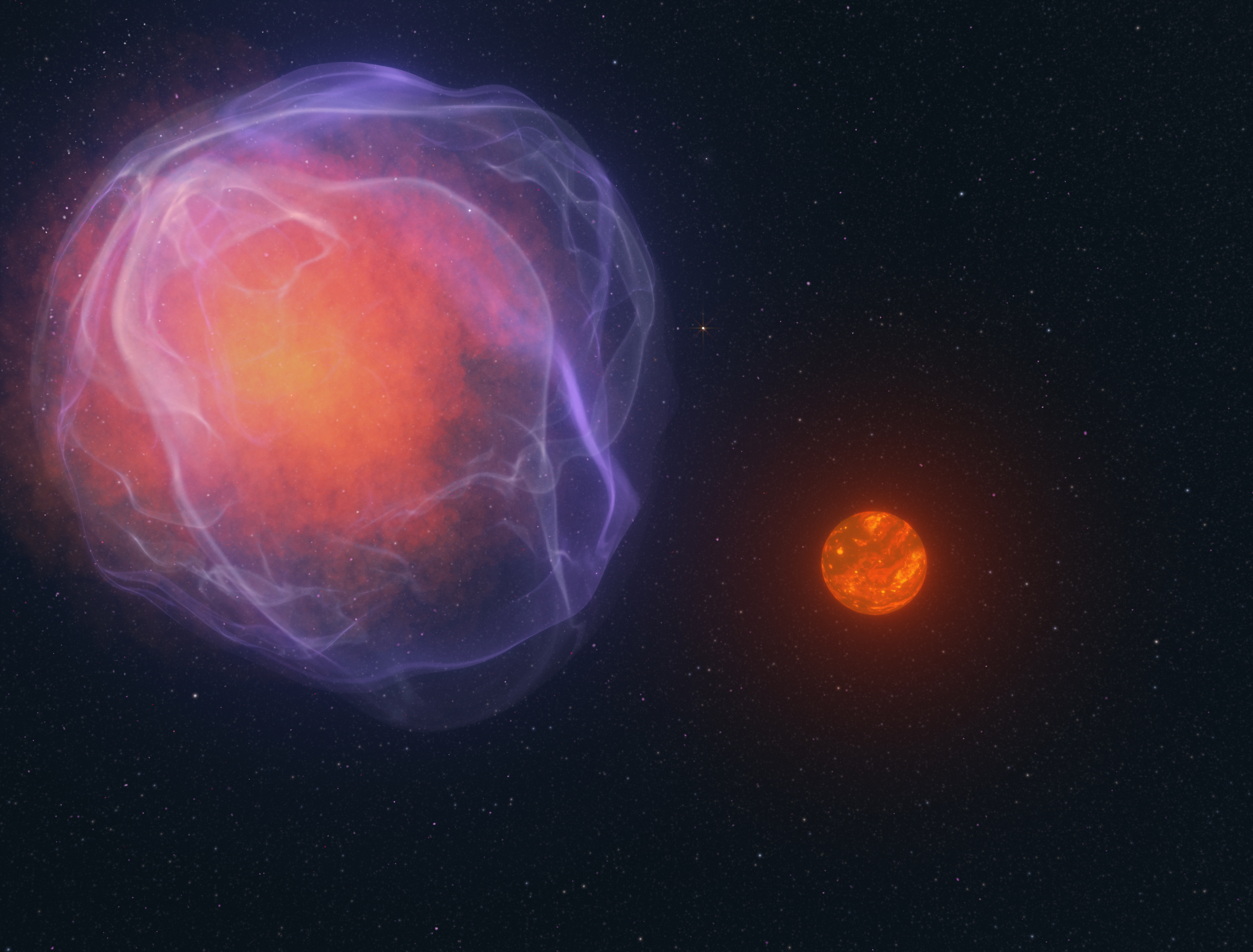The Hubble Space Telescope has provided a dramatic and colorful close-up look at R Aquarii, one of the most rambunctious stars in our galaxy, weaving a huge spiral pattern among the stars.
Tag: Binary Star System
NASA’s Hubble Finds Surprises Around a Star That Erupted 40 Years Ago
Astronomers have used new and archival data from Hubble to revisit one of the strangest stars in our galaxy–40 years after it burst onto the scene as an extraordinarily bright and long-lived nova.

Lone Star State: Tracking a Low-Mass Star as it Speeds Across the Milky Way
A team of astronomers, led by Adam Burgasser, and citizen scientists have discovered a rare hypervelocity L subdwarf star racing through the Milky Way. More remarkably, this star may be on a trajectory that causes it to leave the Milky Way altogether.
A new beginning: The search for more temperate Tatooines
Luke Skywalker’s childhood might have been slightly less harsh if he’d grown up on a more temperate Tatooine — like the ones identified in a new, Yale-led study.
The seven-year photobomb: Distant star’s dimming was likely a ‘dusty’ companion getting in the way, astronomers say
Astronomers discovered that the star Gaia17bpp gradually brightened over a 2 1/2-year period. But follow-up analyses revealed that the star itself wasn’t changing. Instead, it’s likely part of a rare type of binary system. Its apparent brightening was the end of a years-long eclipse by an unusual, “dusty” stellar companion.
VLBA Produces First Full 3-D View of Binary Star-Planet System
Astronomers using the VLBA have produced the first-ever full, 3-D view of binary star system with a planet orbiting one of the stars. Their achievement promises important new insights into the process of planet formation.
Stellar Collision Triggers Supernova Explosion
The Very Large Array Sky Survey gave astronomers the first clue that ultimately revealed a dramatic story — the remnant of a star that exploded long ago had plunged into the core of its companion star causing it, too, to explode as a supernova.
New insights into behavior of ultra-dense star core
Neutron stars are often gravitationally locked with another star and over time siphon off some of the other star’s outermost surfaces. Now, a scientist at PPPL has helped explain two phenomena associated with this process that have long baffled researchers.

Astronomers document the rise and fall of a rarely observed stellar dance
Astronomers have catalogued 126 years of changes to HS Hydra, a rare evolving eclipsing binary. The two stars in HS Hydra began to eclipse each other starting around a century ago, peaking in the 1960s. The degree of eclipsing then plummeted over the course of just a half century, and will cease around Feb. 2021.